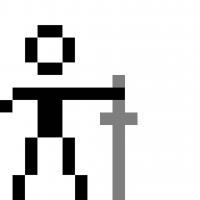So many things to answer. I'll start with the last post.
@Ravyne, the refresh rate depends on 3 things:
1) GPU
2) Method of connection (DVI, HDMI, Display Port)
3) Monitor
The Samsung U28D590D is the first 'inexpensive' 4k monitor to support 60hz. It requires DisplayPort 1.2. If hooked up via HDMI or DVI, it runs at 30hz.
Dell's ~$800, 28" 4k display is a 30hz part, and there is no way to make it run at 60hz.
I tested at 30hz, just for fun. I wouldn't want this; there is a "springiness" to the mouse that would drive me crazy.
For GPUs, any Radeon 7000 series (or later) will drive 60hz on these, so will late 2013 Mac's, and some nVidia cards too, but I don't know which.
As for having many monitors...
Up until about 7 years ago, I was a one monitor guy, and had been since 'monitor' meant 'old television.' My [then] fiance, an accountant, talked me into trying a 2nd monitor (at work, where my employer would pay for it). He agreed--studies show improved productivity. I was hooked.
In 2008, when I built my next PC, I bought 2, and loved them.
In 2010, when I built my current PC, I bought 3 25" monitors (the older 2 going to an employee), and used every inch. The software I was producing at the time (PhoneMyPC) consisted of an Android app, a PC app, and a server component. It was not uncommon for me to have the following open:
* Eclipse (for the Android part)
* VS (two instances, one for PC, one for Server app)
* 2 or more PC instance VMs, for testing
* 2 or more Server instance VMs, for testing
I really did use all the space.
Later, when I let go my employees, I took those old two monitors and mounted them above my current 3. It was nice; I could throw research or reference material up there and not "burry" it behind other windows. However, it was a bit inconvenient (and uncomfortable) to look "Up" to see it. Hence, the 3 new 4k monitors.
@JDX_John, great question. I assumed that 3 4k monitors would give me the screen-space of 12 HD monitors (4 HD monitors each), but as I said in my blog post, that isn't the case. If I were half my age that might be so, but not now. With Windows Scaling, I estimate that I get somewhere between 2 and 3 HD monitor equivalent from each display, so instead of 12, I get between 6 and 9. This is still quite a lot more than 5, or 3 without looking "up" to the top two monitors. Things on my screen now are smaller--in real-world measurements--than before, because the DPI is higher so it is clearer. But they are not 1/2 the size (in each direction).










